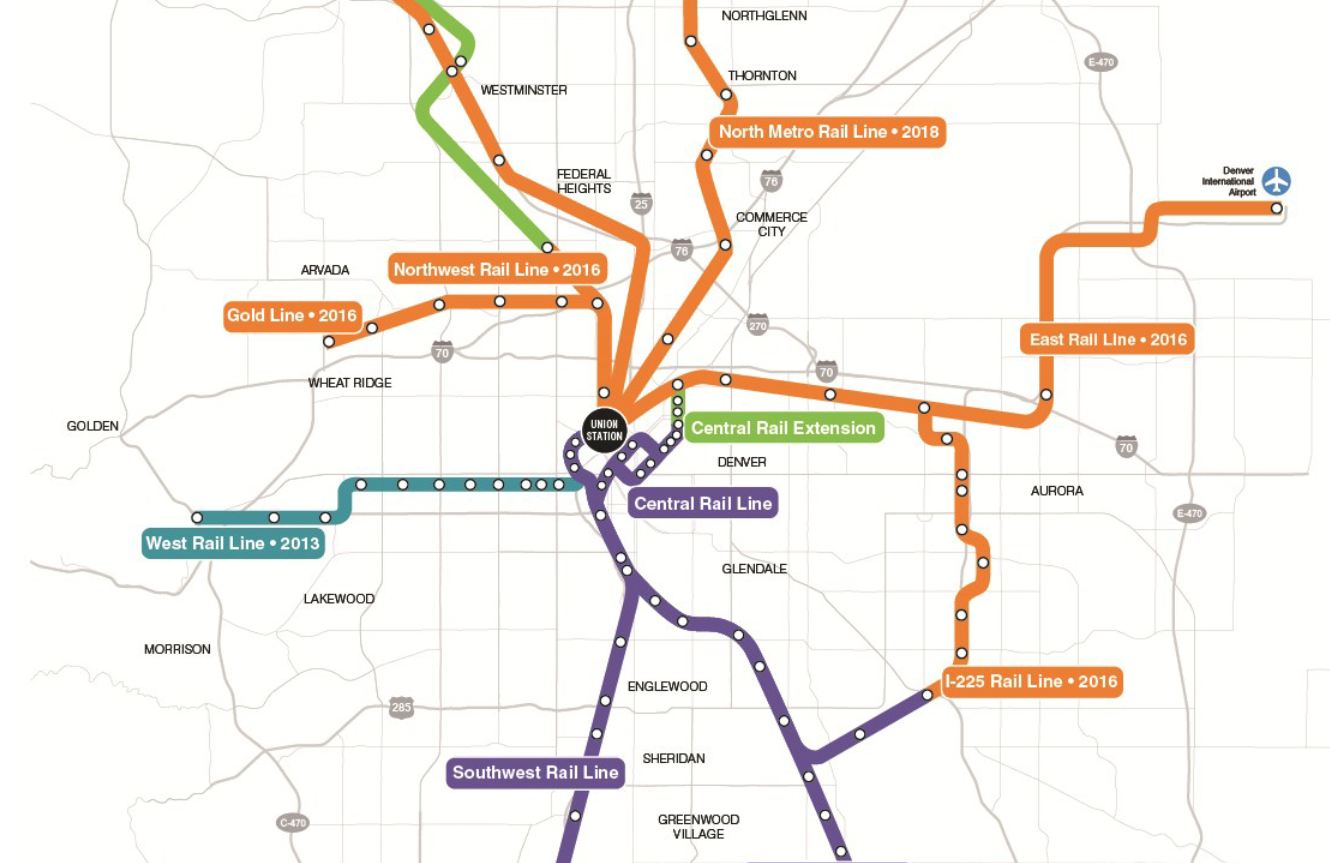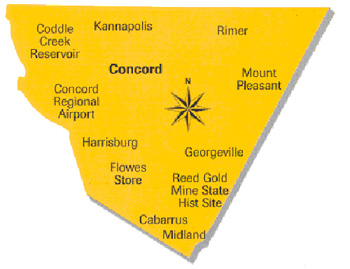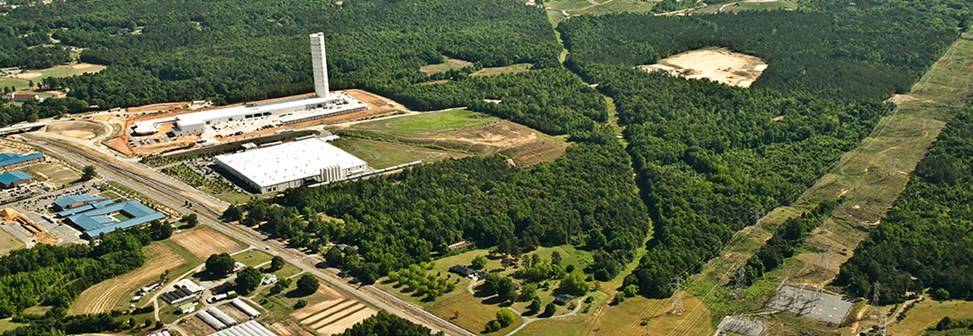Regional or interlocal cooperation simply means one or more units of local government agreeing to collaborate to provide or share some public service, to operate a public facility, or to plan for their joint futures. One type of interlocal cooperation can be an agreement between a municipality and a neighboring county or municipality to jointly provide a public service such as police, EMS, or a 911 system, where such service can be more effectively and economically provided by sharing operational costs and revenues, personnel and facilities. Cooperation may also involve the creation of a joint agency which serves both entities, such as the Charlotte-Mecklenburg Planning Department, which advises both the Charlotte City Council and the Mecklenburg County Board of County Commissioners on matters such as land use, zoning, economic development and community facilities planning.
Another form of regional cooperation occurs through entities created specifically for the purpose of providing services to units of local government within a defined service area. These include Metropolitan Planning Organizations (MPO’s) which conduct regional transportation planning and Councils of Government (COG’s) whose mission is to promote regional coordination and sharing of information, plans, strategies and resources. The collaboration between the Catawba and Centralina COG’s and the local governments within their service areas to create CONNECT Our Future, is an excellent example of regional cooperation in action.
Why is this important to your community?
There are three specific benefits of interlocal or regional cooperation:
- Greater effectiveness in planning, managing and operating regional systems and resources
- Lower costs to local governments and taxpayers, and
- Greater access to facilities and services.
Because regional economies operate without respect to government jurisdictional boundaries, effective economic development strategies are carried out at the regional, or multi-jurisdictional, scale. Likewise, other systems, such as transportation, power generation and transmission, and watershed management, by their nature, serve entire regions, and therefore are most effectively addressed from a regional perspective and with regional coordination among multiple entities, or consolidated entities with wide service areas.
In addition to the greater effectiveness of managing essential regional systems through interlocal cooperation, benefits to local governments and the taxpayers they serve, include lower costs, and access to facilities and services which cannot be feasibly provided locally. One of the most effective ways to lower the cost of government is through the sharing of resources, facilities, personnel and administrative support among multiple local entities in those situations in which it makes sense. Examples include shared GIS information and building code and inspections systems, election systems, and public utilities such as water, wastewater and solid waste disposal systems. All of these can be provided at lower unit costs with the economies of scale achieved with larger service areas and less overlapping and duplicated government facilities, programs and personnel.
Savings can also be achieved when local governments team up to procure materials, vehicles or services in bulk. While most examples involve counties and municipalities, cooperative agreements can also be entered into with school districts for the joint use of school grounds for public recreation, as well as with non-profits, such as an agreement for a YMCA to manage public recreational programs. Finally, many services and facilities are simply not feasible for small local governments to build or operate. Examples include landfills, major utility systems, airports, large public facilities (parks and recreation, civic, convention and performing arts centers), as well as public transportation (bus) systems that are by nature interlocal. Residents of smaller communities must have access to the facilities and services provided by larger entities or private providers, or several local governments could pool resources in collaborative efforts to build and operate shared facilities.
Where is it appropriate to use?
What priorities does it address?
How does it work?
Interlocal Agreements
The primary tool for interlocal cooperation is an interlocal agreement, a contract between two or more governmental entities or service providers to share, or jointly provide, public services and facilities on either a continuing basis, or for backup or emergency services applicable to specific circumstances. State enabling legislation in both North Carolina and South Carolina provide broad discretion for local governments to enter into interlocal agreements. In North Carolina, the Interlocal Cooperation Act, General Statutes Part 1 of Article 20 provides for the Joint Exercise of Powers (§ 160A-461), specifically authorizing interlocal cooperation, as follows: “Any unit of local government in this State and any one or more other units of local government in this State or and other state (to the extent permitted by the laws of the other state) may enter into contracts or agreements with each other in order to exercise any undertaking.” There is no limitation on the purpose or functions to be performed under North Carolina provisions for interlocal agreements, nor are there requirements for the form of the agreements, other than they must be ratified by resolution of the governing board of each governmental unit and published in its minutes. Similarly, Article VIII, Section 13 of the South Carolina Constitution - Joint administration of functions and exercise of powers, goes further and specifically endorses four forms of intergovernmental cooperation, including the “joint administration of any function and exercise of powers and the sharing of the costs thereof,” as well as provisions for all political subdivisions to “share the lawful cost, responsibility, and administration of functions with any one or more governments, whether within or without this State.” It also waives prohibitions against dual office-holding to allow public officials and staff to serve on regional councils of government, and sets out conditions for counties to jointly develop industrial and business parks.
Joint Agencies
North Carolina’s Interlocal Cooperation Act, § 160A-462, endorses the creation and funding of joint agencies by two or more units of government, with the only limitation being that legal title to real property be retained by the participating local entities. South Carolina law specifically references joint development of industrial and business parks. Joint agencies have been created throughout the Carolinas for a variety of specific purposes including the following.
Examples of Interlocal agreements in North and South Carolina:
- Tourism
Pitt County – Greenville (NC) Convention and Visitors Authority - Economic Development
Joint County Industrial and Business Park, Greenville and Anderson Counties, SC
- Transportation and Transit
Piedmont Authority for Regional Transportation-Greensboro, High Point, Winston-Salem
Triangle Transit Authority –Raleigh, Durham, Chapel Hill, Research Triangle Park - Airport Operations
Asheville Regional Airport Authority (City of Asheville and Buncombe County) - Water Treatment
Cary/Apex Water Treatment Plant - Parks and Recreation
Fayetteville-Cumberland County (NC) Parks & Recreation
Resources
Councils of Governments – North Carolina- Southwestern Commission Council of Government
- Land of Sky Regional Council
- Isothermal Planning & Development Commission
- High Country Council of Governments
- Centralina Council of Governments
- Triangle J Council of Governments
- Piedmont Triad Regional Council
- Western Piedmont Council of Governments
- Kerr Tar Regional Council of Governments
- Upper Coastal Plain Council of Governments
- Mid-Carolina Council of Governments
- Lumber River Council of Governments
- Cape Fear Council of Governments
- Eastern Carolina Council
- Mid-East Commission
- Albemarle Commission
- Appalachian Council of Governments
- Upper Savannah Council of Government
- Catawba Regional Council of Government
- Central Midlands Council of Government
- Lower Savannah Council of Government
- Santee-Lynches Council of Government
- Pee Dee Regional Council of Governments
- Berkeley Charleston Council of Government
- Low Country Council of Governments
- Waccamaw Regional Council of Government
Ready to get started?
Using the Tool
Because interlocal agreements and joint agencies may be created for virtually any public purpose, there is no single approach to the use of these tools. However, the following are basic steps that local governments may take to investigate and establish interlocal agreement, starting with an Interlocal Agreement Feasibility Study, as annotated from the Manual of Practice for Drafting Interlocal Agreements, Indiana Rural Community Assistance Program. Before even doing so, however, local governments can ask the question, “Is this something that we could do better, more effectively, or more efficiently, if we did it in partnership?” as they consider the initiation or expansion of any new program, and can look for examples. Involving a stakeholder group in this discussion will both enrich it and invite new and innovative ideas from business, non-profit, and other potential partner and public interests. Such an approach can foster the expansion of the use and success of cooperative agreements that make policy and financial sense to communities and their residents.- Define service criteria and evaluate goals
- Measure the service to each participant
- Does the proposed interlocal service meet the established goals?
- Examples may include:
- Reduction of service costs for participants
- Improved levels of service for participants
- Services provided which would otherwise be unavailable
- Determine the total cost of the joint service and each participant’s cost
- Total cost of the proposed service structure
- Cost of the service to each participant
- Determine whether any additional revenue streams become available to the entity as a result of the joint service agreement
- Describe and analyze the proposed joint service
- Determine service levels required
- Fix responsibility for providing the service
- Identify potential problem areas
- Determine each participant’s cost of providing the existing or new service
- Determine the total cost for each local unit
- What is needed to meet minimum service levels?
- What are the projected service costs?
- Describe and analyze the service currently provided by each local unit
- Describe how the service is currently provided
- Describe the level of service currently provided
- Does the service meet current need?
- What are the future service needs?
- Establish a clear goal for the joint service. This should include:
- A description of the service to be provided
- Clarification of expectations about the joint service
- Identification of all potential participants
- Assess the economic, administrative, and operational feasibility of performing the service on a joint basis. This should include economic, operational, and administrative feasibility.
- Negotiate agreement terms. Establish agreement terms including purpose, duration, responsibilities of the parties, shared costs and rates for services (consult utility expert as necessary), legal entity, and termination provisions.
- Agreement Execution. As required by state law, local governments should execute the agreement by resolution of the governing bodies, following required public hearings.
Partners
- Airports
- Community Service Providers
- Departments of Education / School Districts
- Economic Development Organizations
- Elected Officials
- Health and Wellness Programs
- Health Care Providers
- Housing Authorities
- Landscape Architects, Planners, and Urban Designers
- MPOs, RPOs, and COGs
- Municipal Departments
Where has it worked?
Cabarrus County - Concord, NC
About the Program
Cabarrus County has had several interlocal agreements with various entities including other counties, utility districts, and government agencies. Such agreements determine how funds are allocated and facilities are maintained within the county. In Cabarrus County, the Convention and Visitors Bureau (CVB) receives the proceeds of the room occupancy tax levied by the County on hotel and motel occupancy revenues in the County, as the stated purpose of the tax is to generate revenue for the promotion of tourism. In exchange, the CVB gives the County 5 percent of the tax revenues for administrative purposes and an additional 10 percent to support the County’s Sports Development Fund and $100,000 for the County’s arena. In 2011, this interlocal agreement was amended so that an additional 5 percent would be channeled into a Facilities Upgrade Fee, which the county would use for improvements to County and local school, parks, recreation and athletic facilities that can be used to serve locals and visitors alike.
Why it works
Interlocal agreements provide a mechanism to share resources, allocate funding, and provide for coordinated planning between governments and entities. Effective planning rarely ends immediately at political geographic boundaries, so it is important that a process for allowing for agreements and adjustments of previous agreements is smooth and transparent. Cabarrus County has successfully implemented several interlocal agreements to achieve successful, coordinated planning.
Denver’s Regional Transit District's FasTracks Program - Denver, CO
 Image Source: FasTracks Regional Transportation District of Denver.
Image Source: FasTracks Regional Transportation District of Denver.
Contact
Pauletta Tonillas, RTD FasTracks Public Information
Manager
303-299-2469
pauletta.tonilas@rtd-fastracks.comAbout the Program
The RTD FasTracks Program is a multi-billion dollar comprehensive transit expansion plan initiated in 2004 to build 122 miles of new commuter rail and light rail, 18 miles of bus rapid transit, 21,000 new parking spaces at light rail and bus stations, and enhance bus service for easy, convenient bus/rail connections across the eight-county district surrounding Denver. The program began when Denver-area voters approved the FasTracks regional transit initiative in 2004, however, the planning began as early as 1994, when RTD and CDOT began working together to identify transit corridors for the Denver region. The commencement of FasTracks was preceded by a 2003 analysis that explored the necessary construction coordination between FasTracks and the state highway system. This analysis was used to develop a Master Intergovernmental Agreement (IGA) between RTD and CDOT that was signed by both agencies in 2004. The Master IGA established a coordinated process which would facilitate the implementation of the FasTracks Plan and preserve the ability to pursue planned highway and transit improvements in corridors where both highway and transit improvements would occur.
Why it works
FasTracks is successful because of citizen support, dedicated funding, and regional cooperation. The project is funded through a combination of sources, including the voter-approved sales tax increase of 0.4 percent, passed in 2004. The project stays on track because every year RTD staff conducts an evaluation of the program (called the Annual Program Evaluations (APE)), which examines Potential Critical Adjustments to the program that could optimize efficiency without changing the plan. FasTracks also benefits from public private partnerships and federal funding to make sure that tax-payer dollars can go the furthest possible. Additionally, demonstrating the regional cooperation required of such a capital project, local jurisdictions affected by FasTrack contribute 2.5 percent of corridor costs, which equate to about 2.01 percent of total project costs. This contribution is estimated to total $95.03 million. The initiative is guided by a Board of Directors and Citizens Advisory Committee to ensure that decisions are informed by the opinions of all affected stakeholder groups. Finally, FasTracks is successful because it corresponds to regional land use planning targeted at transit-oriented development, so that the future rail extensions will be met with dense, active development throughout the region.
North Mecklenburg Industrial Park - Lake Norman Regional Economic Development Corporation, NC
About the Program
In the early 2000s, the North Mecklenburg region (Davidson, Huntersville, and Cornelius, NC) had become a bedroom community for Charlotte. All three communities were heavily reliant on residential taxes and the demand for housing in the North Mecklenburg County was expected to triple over the following 30 years. However, residential development was not paying for itself with an average cost to provide service of $1.15 for every $1 collected in taxes. In 2002, the Lake Norman Chamber of Commerce commissioned an Economic Development Strategy report for North Mecklenburg County. The study focused on three major needs in the area. These included expanding job opportunities, upgrading local jobs to expand beyond service and retail jobs, and diversifying and expanding the tax bases of the three communities. As a result, the Lake Norman Regional Economic Development Corporation (LNREDC) was founded to improve the community, work on site development, enhance internal communications and industry relations, and engage in external marketing. The three communities signed an interlocal agreement for economic development support, funded on a per capita basis, and cost-sharing associated with job development in the region. The LNREDC planned a new industrial park utilizing a 126-acre site in Huntersville that would have likely become the site of over 1000 new homes. In 2005, the industrial park, now 330 acres of land, attracted Prairie Packaging as the first tenant.
Why it works
The joint industrial park and interlocal agreement has allowed the three communities to share the risks and rewards and gives smaller communities the chance to compete against larger municipalities. Under this agreement, the three communities shared the land and construction costs and the resultant tax revenues. The agreement was unique as it marked the first time three municipalities in North Carolina entered into a cost and revenue sharing agreement centered on an industrial park and job growth. Since attracting the first tenant in 2005, LNREDC has brought over $218.3 million in new capital investment, over 30 new companies, and more than 1,711 new jobs to the region.
http://www.nclm.org/meetings-training/Documents/StrengthinRegions.pdf
- Community Service Providers




